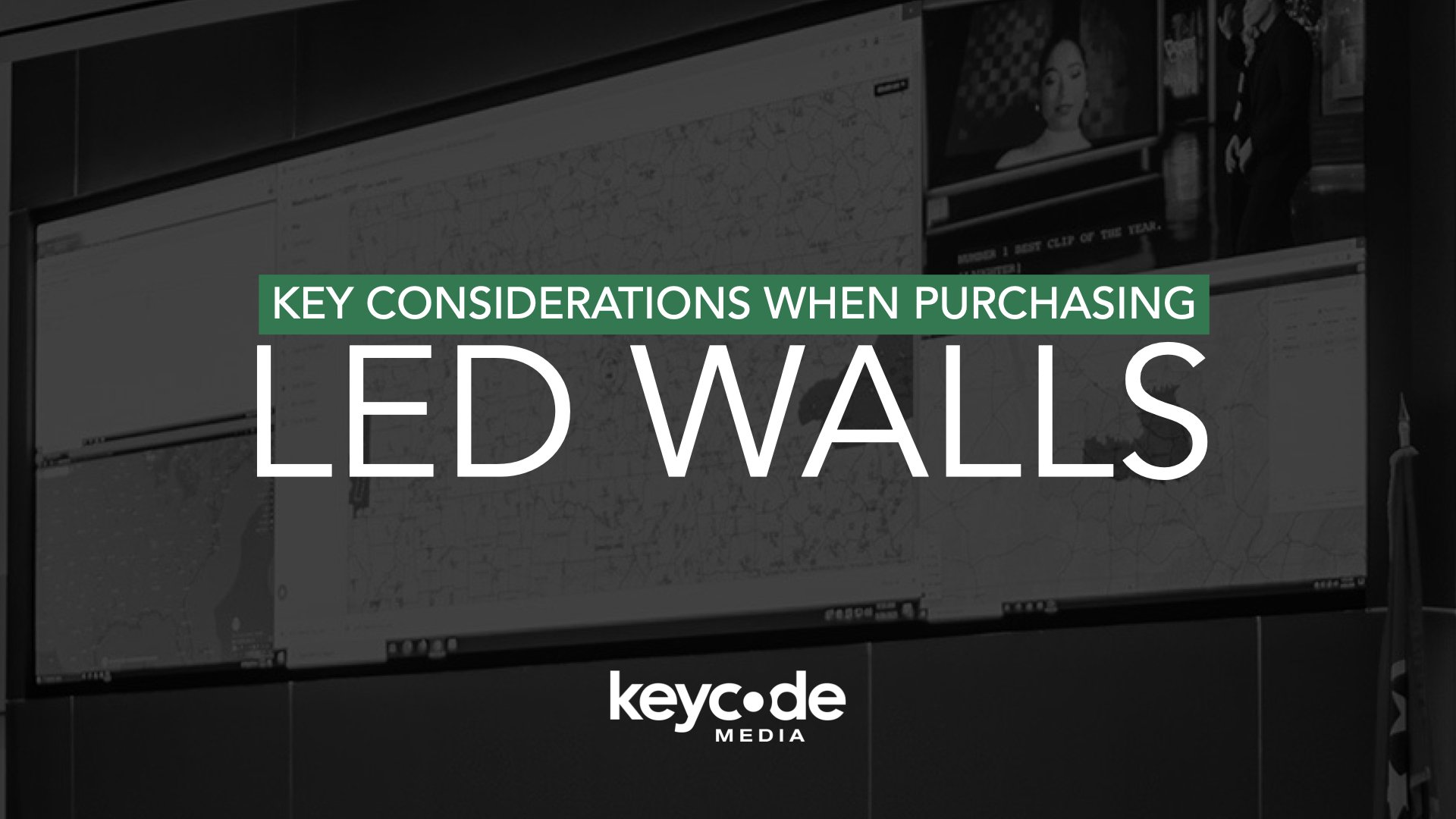
Key Considerations When Purchasing an LED Wall
As an audiovisual engineer, purchasing an LED wall requires careful consideration of several essential aspects. It’s crucial to take note of the critical factors that impact the LED wall’s overall performance, such as pixel pitch, viewing distance, brightness, resolution, refresh rates, power consumption, heat, electrical requirements, indoor and outdoor use, IP ratings, and the type of LED wire used.
The Key Code Media team has seen the demand for LED display design and installations exploding with specific use cases for Government EOC Rooms, Sports Arena, Cinemas and Televisions, Public Signage and Retail, Emergency Operations Centers, Corporate Conference Rooms, House of Worship, Corporate Lobbies, Medical Facilities (Hospitals Signage), Bars and Restaurants. Let’s take a look at the most important technical specification to consider before making a purchase.
If you have an interest in learning more- please don’t hesitate to contact your preferred systems integrator, Key Code Media.
Pixel Pitch:
The pixel pitch is the distance between the centers of adjacent pixels. The smaller the pixel pitch, the higher the resolution of the screen. For instance, an LED wall with a 1.5mm pixel pitch provides a higher resolution than a 3mm pixel pitch screen.
Minimum Viewing Distance:
The minimum viewing distance is the shortest distance at which the screen’s image can be viewed without any visual distortion. The minimum viewing distance depends on the pixel pitch and screen size. For example, an LED wall with a pixel pitch of 2.5mm will have a minimum viewing distance of around 3 meters.
Brightness:
The brightness of an LED wall is measured in nits or candelas per square meter (cd/m²). It determines the screen’s visibility in different lighting environments. For outdoor installations, a brightness of 5,000 nits or more is recommended. For indoor installations, a brightness of 1,000-2,000 nits is typically sufficient.
Resolution:
The resolution of an LED wall is the number of pixels in the display, which determines the clarity of the screen’s image. For instance, an LED wall with a resolution of 1920×1080 (Full HD) can display Full HD content without any scaling.
Refresh Rates:
The refresh rate is the number of times per second the screen updates its content. A higher refresh rate produces smoother images and reduces motion blur. For instance, an LED wall with a refresh rate of 120Hz can display fast-moving content without any lag or flicker.
Power Consumption (Average and Maximum):
The power consumption of an LED wall is measured in watts and depends on the screen size, brightness, and configuration. It’s essential to consider both the average and maximum power consumption to ensure that the display does not overload the power supply. For instance, an LED wall with an average power consumption of 300W and a maximum power consumption of 1000W requires a power supply that can deliver at least 1000W.
Heat (BTU):
The heat generated by an LED wall depends on its power consumption and the environment where it’s installed. The BTU (British Thermal Unit) rating measures the amount of heat generated by the display, and it’s essential to consider it to ensure that the screen does not overheat. For instance, an LED wall with a BTU rating of 4000 requires a cooling system capable of dissipating at least 4000 BTUs per hour.
Electrical Requirements:
The electrical requirements of an LED wall include voltage, amperage, and frequency. It’s essential to ensure that the display’s electrical requirements match those of the power supply to avoid any compatibility issues. For instance, an LED wall that operates at 220V and 50Hz requires a power supply that can deliver 220V and 50Hz.
Indoor and Outdoor:
Indoor and outdoor LED walls have different requirements. For instance, outdoor LED walls require higher brightness and IP-rated protection against dust and water. Indoor LED walls, on the other hand, have lower brightness requirements and may not need any IP protection.
IP Ratings (Ingress Protection Rating):
IP ratings indicate the level of protection against dust and water. For outdoor installations, it’s essential to choose an LED wall with a high IP rating to ensure that it can withstand harsh weather conditions. For example, an LED wall with an IP68 rating provides complete protection against dust and water immersion up to 1.5 meters.
Copper Wire LED VS Gold Wire LED
There are two types of LED wire used in LED walls, copper wire, and gold wire. Gold wire is more expensive but offers better performance, such as higher brightness and longer lifespan. Copper wire is cheaper but may not offer the same level of performance as gold wire.
In conclusion, purchasing an LED wall requires careful consideration of several essential aspects to ensure that the display meets your requirements. By taking note of the factors mentioned above, you can select an LED wall that provides optimal performance and value for your installation.





